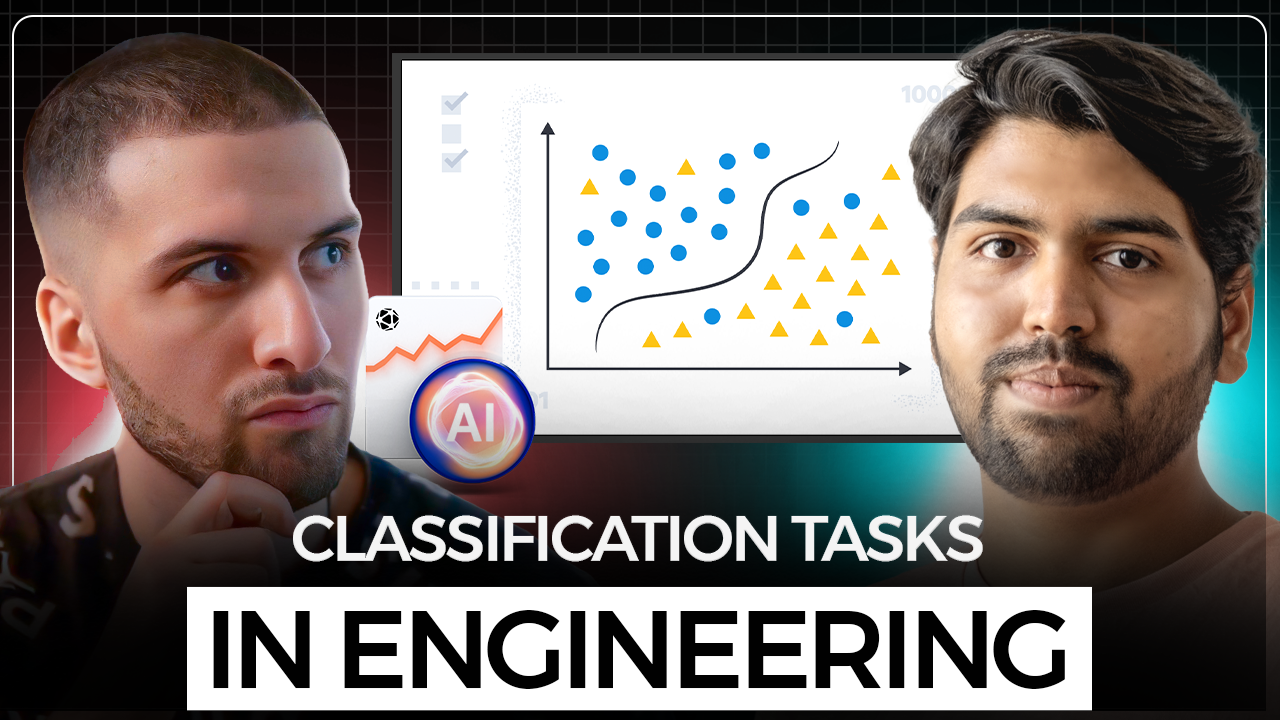In this Deep Dive session, Ram is utilizing our low-code platform to perform a machine-learning CAD classification. Through practical examples and a live demo, Ram will build ML classification tasks from scratch that can assist engineers.
The Current State of Engineering Tools and Processes
Before diving into solutions, let's address the current engineering tools and processes challenges. Despite the inherent nonlinear iterations, the workflow is often linear and sequential in hardware product development. Engineers are divided into silos based on their expertise and the tools they use, from CAD designers to simulation and manufacturing experts. This segmentation creates inefficiencies and hinders collaboration.
Learn how Artificial Intelligence impacts your product development journey - The AI in Engineering whitepaper.
The Current State of Engineering Tools and Processes
Before diving into solutions, it's important to understand the current challenges in engineering tools and processes. In hardware product development, workflows are often linear and sequential despite the inherent nonlinear iterations. Engineers are divided into silos based on their expertise and the tools they use, from CAD designers to simulation and manufacturing experts. This segmentation creates inefficiencies and hinders collaboration.
Leveraging Automation with Low-Code Platforms
At Synera, a low-code language tailored for engineers can bridge these gaps. By automating repetitive and manual tasks, we can accelerate product development. Our tool includes a canvas, allowing engineers to build workflows visually, closely mirroring their traditional work methods.
One of our standout features is the powerful 3D visualization integrated into our low-code software. This allows users to design workflows with nodes and templates, making complex tasks more manageable. For instance, our customers, like EDAG, have reduced the time required to achieve their head impact coefficient values using our tool.
Applying Machine Learning in CAD Classification
The core of our discussion today is integrating machine learning into CAD classification. Machine learning is particularly useful when the relationship between inputs and outputs is complex and hard to define through conventional methods.
Common Machine Learning Tasks: Regression and Classification
Two fundamental tasks in machine learning are regression and classification. Regression predicts a continuous value, such as temperature, while classification categorizes data into discrete classes, such as weather conditions.
Let's consider a practical example. Suppose you're an engineer at a bearing company tasked with automatically identifying different parts. First, we generate a dataset by creating parametric models of various parts—housing, bearings, and bolts. Each part is labeled with a class index. Next, we extract geometric features from these models, such as volume, area, and dimensions, which serve as inputs for our machine-learning model. We generate multiple designs and corresponding feature datasets using Synera's design exploration capabilities.
After preparing the dataset, we move to the machine learning phase. Synera simplifies the process with pre-built nodes for model training and prediction. By connecting these nodes to our feature dataset, we train a classification model and use it to predict the class of new parts.
The Steps: Creating a Classification Model in Synera
- Generating the Dataset: We use parametric workflows to create diverse part designs and extract their geometric features.
- Training the Model: We preprocess the dataset, handle null values, and normalize the features. Using Synera's classification model node, we then train the model.
- Making Predictions: With the trained model, we classify new parts by extracting their features and feeding them into the prediction node.
Addressing Questions and Advanced Customization
During the demo, questions arose about handling null values and tuning hyperparameters. While our tool aims to simplify the process, advanced users can integrate custom scripts for more control over the models and hyperparameters. For instance, users can import their own (Python) scripts and automate optimization processes within Synera.
Synera's low-code platform offers engineers a powerful yet accessible way to integrate machine learning into their workflows. Whether automating classification tasks or exploring advanced regression models, our tool provides the flexibility and ease of use needed to drive innovation in CAD classification.
Feel free to reach out if you have any further questions or need more detailed demonstrations.

